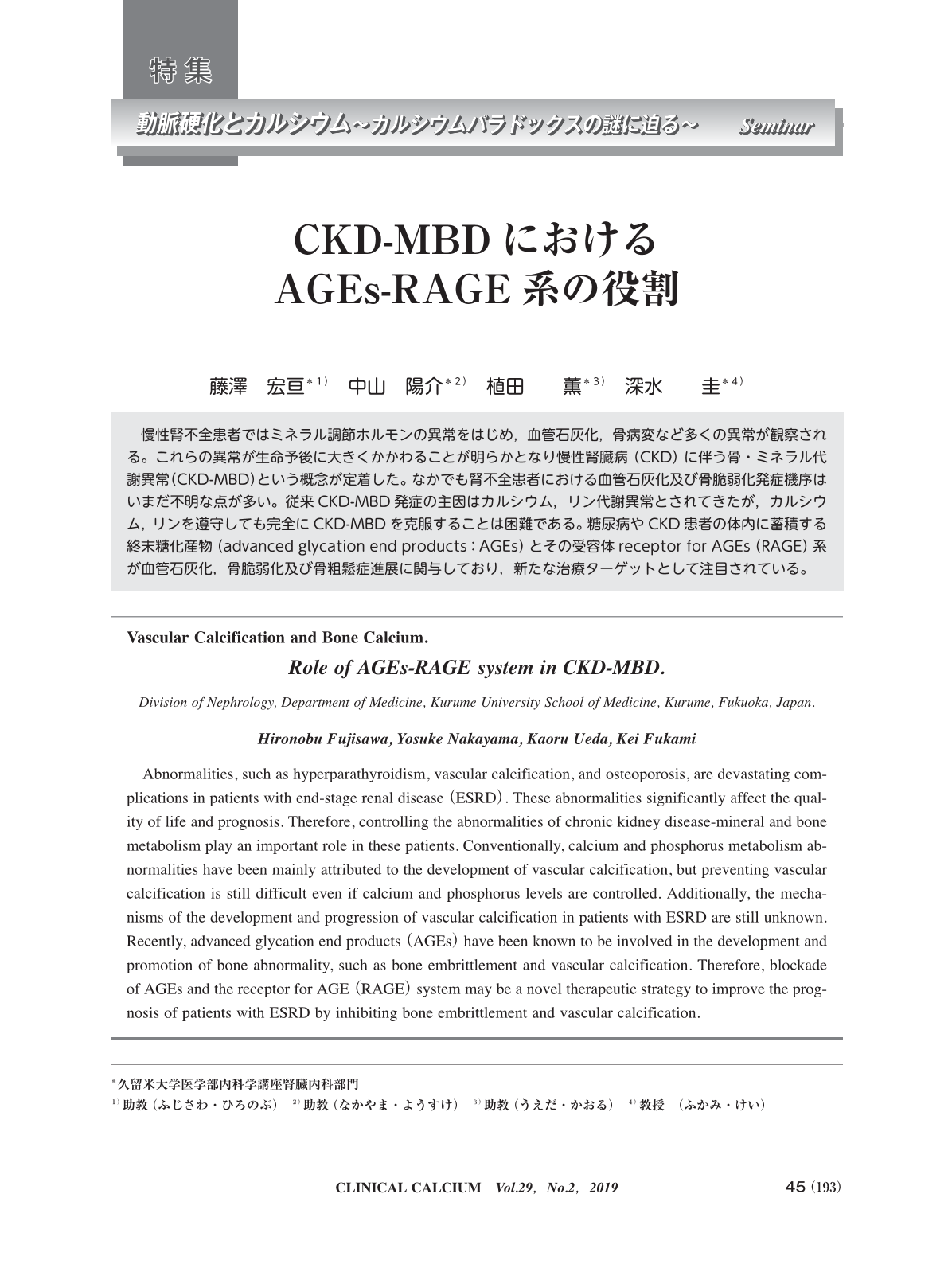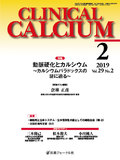Japanese
English
- 有料閲覧
- Abstract 文献概要
- 1ページ目 Look Inside
- 参考文献 Reference
慢性腎不全患者ではミネラル調節ホルモンの異常をはじめ,血管石灰化,骨病変など多くの異常が観察される。これらの異常が生命予後に大きくかかわることが明らかとなり慢性腎臓病(CKD)に伴う骨・ミネラル代謝異常(CKD-MBD)という概念が定着した。なかでも腎不全患者における血管石灰化及び骨脆弱化発症機序はいまだ不明な点が多い。従来CKD-MBD発症の主因はカルシウム,リン代謝異常とされてきたが,カルシウム,リンを遵守しても完全にCKD-MBDを克服することは困難である。糖尿病やCKD患者の体内に蓄積する終末糖化産物(advanced glycation end products:AGEs)とその受容体receptor for AGEs(RAGE)系が血管石灰化,骨脆弱化及び骨粗鬆症進展に関与しており,新たな治療ターゲットとして注目されている。
Abnormalities, such as hyperparathyroidism, vascular calcification, and osteoporosis, are devastating complications in patients with end-stage renal disease(ESRD). These abnormalities significantly affect the quality of life and prognosis. Therefore, controlling the abnormalities of chronic kidney disease-mineral and bone metabolism play an important role in these patients. Conventionally, calcium and phosphorus metabolism abnormalities have been mainly attributed to the development of vascular calcification, but preventing vascular calcification is still difficult even if calcium and phosphorus levels are controlled. Additionally, the mechanisms of the development and progression of vascular calcification in patients with ESRD are still unknown. Recently, advanced glycation end products(AGEs)have been known to be involved in the development and promotion of bone abnormality, such as bone embrittlement and vascular calcification. Therefore, blockade of AGEs and the receptor for AGE(RAGE)system may be a novel therapeutic strategy to improve the prognosis of patients with ESRD by inhibiting bone embrittlement and vascular calcification.



